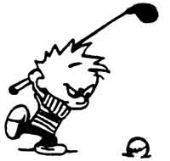-
Posts
79 -
Joined
-
Last visited
Everything posted by Etzwane
-
basically one has to initially regain spine flexion and loose left tilt, then go into rigth tilt and extension of the spine. For this to work smoothly the hips have to slide-rotate enough in advance. My pro used the same drill with me at the time.
-

Learning through feel, or mechanics?
Etzwane replied to Diece's topic in Instruction and Playing Tips
I'm more in line with the usual "on the practice range learn what good mechanics feels like and use that feel to produce the mechanics on the course". -

Good instructor - Long Island NY. ??
Etzwane replied to mfm22's topic in Instruction and Playing Tips
Some years ago I was following via a forum a guy taking lessons from Rick Nielsen at Turtle Cove golf center (Pelham Bay park) and that seems really good. I don't know if that qualifies for being in LI for you. -
Very impressed ! Beautiful (and effective given your index) swing !
-

Shawn Clement or Stack and Tilt for a Beginner?
Etzwane replied to outlaw1984's topic in Instruction and Playing Tips
I agree with the other part of your message (I do work with a S&T instructor, have the book and videos and expect this is a good way to start for beginners) but Clement's teaching is not bad, just not good for me and (I think) my body type. It's a lot more of an up-and-down arm swing that can work with people that have a good rythm. -

John Jacobs Incorrect Ball Flight Laws
Etzwane replied to 2turnswish's topic in Instruction and Playing Tips
Sorry but that's not what we say: we say ball starts about where the face points (actual difference with the face depends on the club) and then path relative to face determines "side-spin". We don't say that the ball curves in the direction of the club path. So definitely for a draw we would want at impact a face aiming right of target and a club path even more to the right. The difference between the old assumption and the "modern" ball flight laws are more obvious when trying to diagnose a straight-slice or straight-hook (ball starting at target and going away from target). JJ would say the path is correct and the face was open/close but we would say the face was OK but the path is wrong, completely different "fix".- 58 replies
-
- 1
-

-
- split
- john jacobs
-
(and 1 more)
Tagged with:
-

John Jacobs Incorrect Ball Flight Laws
Etzwane replied to 2turnswish's topic in Instruction and Playing Tips
I'm afraid JJ had the ball flight laws wrong, so I would stay away from any of his books.... I recognize his contributions to golf instruction but at some point wrong is just wrong. edit: answered immediately to this post and now I saw the whole discussion. I agree with iacas and remembered reading 'Practical Golf' and being surprised that the "fixes" we all based on the wrong ball flight laws.- 58 replies
-
- split
- john jacobs
-
(and 1 more)
Tagged with:
-
One potential problem with adding weight is that it changes how the tip of the shaft works around impact (it will have more "kick") so it might change ball trajectories. I also like more heavier feels for clubs (my 3 wood is steel shafted) and I am testing a driver with a heavier shaft (75g) shortened to under 45 inches that translates into a D6-D7 swingweight and at last I can "feel the club" and "push on it". I'm in no way a good player but it seems that it is what I need to play my best.
-
I'm using a method that for a standard shot exposes the bounce by playing the ball at or just before low point. This was advertised in a series of video by Dan Carraher. I don't have a lot of "touch" so methods that require presenting a vertical shaft for a centered ball aren't easy for me (beyond just a putting stroke à la Runyan) and Dan's approach is a no brainer for me.
-

Great Golf Instruction Tips, Videos and Articles
Etzwane replied to mvmac's topic in Instruction and Playing Tips
Thanks ! -

Dana Dahlquist Online Academy Now Live
Etzwane replied to mvmac's topic in Instruction and Playing Tips
I guess this is the "new" Gankas-like (Como? someone mention his name but I have no confirmation) move that Dana has introduced in his teaching a year or so ago (from what I've seen in his public videos). Very different from the "S&T-like" transition from earlier. In his student videos on instagram I see both types of swings now. -
To the OP: I'd use the exact same swing but align you body left and open the club face at address wrt your alignment (half way between body alignment and target for 6 iron as a rule of thumb, less open for longer clubs). As span3636, "push fade" wrt to your body alignment can be a good thought.
-
The standard S&T fix to steep angle of attack and deep divots is more hip slide in the downswing. With all knobs turned to max, the ball flight should be high draws.
-

Hogan lateral movement too much for most people?
Etzwane replied to cartierbresson's topic in Instruction and Playing Tips
I loved reading the Golfing Machine but this is a book targeted at instructors and it would take years of studies to master (and probably a number of sessions with a GSED...). Using it to improve one's swing is a real challenge (I tried and then followed Lynn Blake's forum and saw an Authorized Instructor). I like the book because it gives a framework to organise one's thoughts but e.g. there little biomecanics in there... then there's MORAD (I know very little of it) and S&T as a kind of TGM+MORAD+biomecanics to the extreme. -
Right sided swing, as promoted by Gary Edwin.
-

Why Flaring Your Feet at Address Makes Golf Easier
Etzwane replied to mvmac's topic in Swing Thoughts
If you flare the rear foot *and* let the rear leg loose some flex, it would be difficult to sway. -

Why Flaring Your Feet at Address Makes Golf Easier
Etzwane replied to mvmac's topic in Swing Thoughts
The back foot will not cause more sway if you allow the back knee to straighten, as it will move the back hip back and towards the target instead of straight back behind you. -

What does your screen name / username come from?
Etzwane replied to Jeepthrills's topic in The Grill Room
Mine is from character in an SF book by Jack Vance. -
DaveP043 gave the correct physics explanations. In golf terms and looking only at in plane forces as in the video: a force applied to handle transverse to the shaft will cause the handle to mode but also the club to rotate. Wrist cocking will cause the club to rotate around the hands (not the center of mass so it's a combination of rotation around the center of mass and movement of the COM). In the backswing, if one has very loose wrists (no torque) and start the backswing (force on the handle) the club will rotate and give the "scottish lag". It is necessary to add torque to maintain the club in synch with the arms. No very interesting so far. The same applies at the transition: the force on the handle tends to increase the club head lag while the wrist might have reach their maximum deviation and tend to uncock. The same effect continues in the downswing up to the moment the force aligns to the shaft (around p6 for these good players, when the hands path is roughly horizontal), then the force on shaft helps release the lag.... and even more when the hands move up again (I guess that's the "idea" behind the "Manzella jump"). The interplay between force and torque in the downswing and the timing of one overtaking the other brings back to my mind the TGM concept of the delivery path of the power package (in a simplfied manner, path of the hands): its form would affect how and when the force acts on the club.
-
His irons seems to be tweaked for him to stay almost perfectly on the Turned Shoulder Plane (defined by the position or the rear shoulder at the top of the swing) which is kind of the preferred (or simplest) plane in TGM for no plane shift patterns. To my eyes, the speed seem to come from the right arm, e.g. he looks to me like a TGM Hitter with the club as an angled extension of his right forearm (hence no right wrist cock).
-
Thanks !
-
I would solved both problems at once: less hands and left shoulder moving more down in the takeaway (maybe as a *feel*: sending it towards you left toe).
-

Teacher recommendation for SE London?
Etzwane replied to golfaddict1's topic in Instruction and Playing Tips
I've heard very good things about Ian Clark at World of Golf in New Malden.


